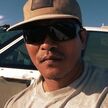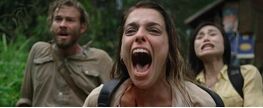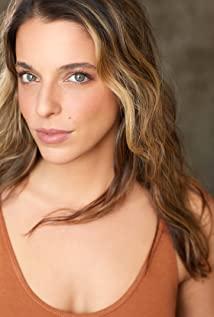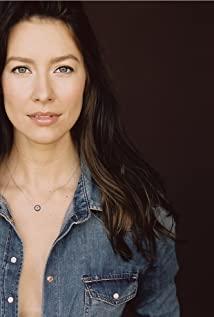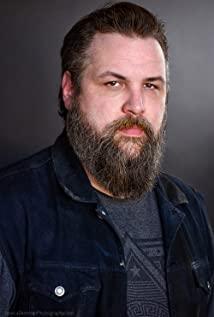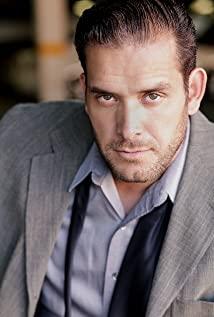The movie "Artificial Monster" is to spend every penny to the extreme. The film is a "guerrilla shot" film by filmmaker Mark Toia. The Australian screenwriter/director/director of photography has made a name for himself in Hollywood circles with this sci-fi action film—just as he thought.
"I've always had a very strong desire to create a movie like 'Man-Made Monster'," he said. "It was just a hobby at first, and then I started shooting commercial films. I did this just to see if I had the strength to make a high-end production and blockbuster effect when the budget may only be as much as the food and beverage costs of those large-scale films. The wonderful film, use it as a calling card to enter Hollywood."
Toia is not new to the film industry. With 25 years of experience in the industry, he is a well-known TV commercial director working with the world's largest commercial agencies and brands.
"I just wanted to make a movie the way I wanted it, with absolutely no outside interference," he said. "Of course, if you're lucky enough to self-finance the film, you have the opportunity to make a completely different film. At least some of the decision-making steps will be much faster because you only have to report to yourself. . That's why I'm able to achieve large-scale production value because the budget is razor-thin. No one's putting pressure on you, making you compromise, what you're supposed to do."
The screenplay for the film was co-written by him and Jeff Hand. The film tells the story of a corrupt CIA agent (Neal McDonough) who illegally drops 4 prototype robots into a suspected drug-making camp in Central Asia for a covert military operation, but things are not as simple as they might seem. .
“I needed to be on the lookout for all aspects and keep a clear mind when thinking about this project. My plan was to spend all of my budget on filming and try to save as much as possible on non-shooting. First, I formed a small A terrific, versatile commando-style team that was more than happy to shoot in a minimalistic way."
He continued: “In order to achieve the required speed and agility, it is necessary to shoot with at least four cameras. When shooting an action movie, the more cameras you have, the larger the surface area you can shoot. The continuity aspect of shooting the action It’s a lot easier. The actors love it because they can get into the character from the start and get it done in one go.”
The background location of the story is in the Golden Triangle region (which spans three countries of Thailand, Myanmar and Cambodia), so Toia decided to shoot on the spot in Cambodia. "[Shooting in Cambodia], we didn't need any sets. We didn't need a huge art team. We didn't need a lighting team and a mechanical team. We just shot the scene in front of us, and the result was amazing."
The team spent weeks shooting in the jungle, traversing muddy roads, enduring torrential downpours and extreme heat, and climbing rocky mountains. Filming began in late 2016 with three RED EPIC DRAGON 6Ks and a HELIUM 8K tester #00003.
But the choice of lens is not the same as the requirements of the camera. Instead of buying expensive cine lenses, Toia bought a few sets of less expensive Rokinon lenses and some Canon zooms. "Originally, I thought it wouldn't take long to break, because I didn't want to worry about the lens being broken or something during the shooting process. We tested these lenses, (the test results were very good,) These lenses are as clean and sharp as any other true cinema lens. They do our job.”
In order to shoot smoothly in the jungle, the director decided not to monitor the tent. The camera crew spread out the cameras, allowing director Toia and four cinematographers, including lead photographer Tony O'Loughlan from the Australian Photographers Association, to achieve a wireless, less-accessory style. shoot. The timecode of the RED cameras is synchronized so the photographer can shoot with multiple cameras at any time. Live fast transcoding allows the director to check in every evening and early in the morning.
“All I need to know is if the photographer’s exposure is accurate and if everything is going well,” says Toya. “Depending on the different types of emotions described in the script, we shoot in different ways, like using a tripod or hand-held, or even more extreme ways. I have a lot of confidence in my shooting team and the camera, and I have a lot of confidence in myself. I am also very confident in my ability to capture image effects. Because of this, I can focus on the acting skills of the actors.”
"The main reason I chose RED was its dynamic range," he continued. "As far as I'm concerned, the most attractive thing about the RED camera is that it has a dynamic range of 17-18 stops, which is very useful for shooting HDR. For example, when we shoot in a cave with natural light, HELIUM's advantages are reflected. Come out, this feature (dynamic range) can greatly improve work efficiency.”
“The information captured by the RED cameras is so much better than I need in post. I can use RAW files to dig deeper into shadows or reduce highlights for extra control. The low noise properties of the de cameras allow me to Get better results when keying, tracking, and compositing.”
“If during shooting, if the color temperature is set incorrectly or the exposure is slightly overexposed or underexposed, the RAW data allows us to correct it in post and complete the final color correction. The effect I want." Toia emphasizes that the final image is not determined by the camera's sensor or some default color settings. "The final image is determined by the photographer, lens selection and final color correction."
Resolution is another key creative advantage for Toia. “When you’re doing an action movie, it tends to be tighter to show the tension of running and jumping. If you want a close-up, I can do that by zooming in instead of having the actors repeat the actions or reactions they were filming earlier. .6K and 8K resolutions allow me to easily reframe to enhance a scene or an actor's performance. If you push a shot to 200-300%, it's like a different shot. I did a lot of shots Reframe. It could be 5% or 200%, but I reframe because I want to make sure the shot is what I want.”
The extra pixels also help to adjust the aspect ratio of the movie, we shot it with 2.39:1, but it ended up being 2:1. Another area where Toia "saves a lot of time" is that you can choose any static frame from the video to use as a promotional still. "From a creative standpoint, high resolution really helps you," he said. He also shot some footage in New York and Vancouver between TV commercials. Robot characters are modeled in 3D and rendered in RedShift, and the entire film is in 4K.
For Toia, the film was a huge success. The advance screening and the good reputation of the audience led more than 20 producers to invite him to direct with more than 30 plots and TV drama scripts. They are all here, hoping to cooperate with Toia.
"A lot of the producers of big productions don't get paid, and I've shown them that it's possible to shoot well and make money," he said.
View more about Monsters of Man reviews



